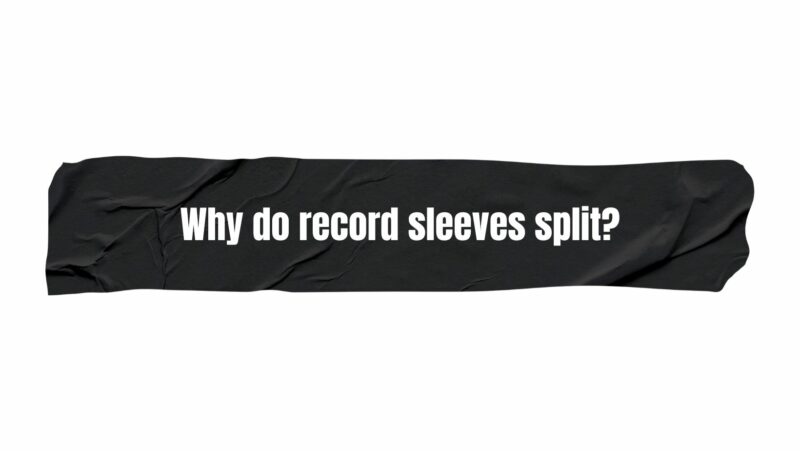For vinyl enthusiasts and collectors, maintaining the pristine condition of their records and album covers is paramount. However, a common issue that can plague vinyl collections is the splitting of record sleeves. The phenomenon of record sleeves splitting can be frustrating and disheartening, especially when it affects the visual appeal and protection of valuable vinyl records. In this article, we will delve into the reasons behind why record sleeves split, explore the factors that contribute to this problem, and provide insights into preventive measures that can help preserve the integrity of vinyl record sleeves.
Understanding Sleeve Splitting
- Material Composition
The primary cause of record sleeves splitting is often attributed to the material composition of the sleeves themselves. Many older vinyl records were packaged with inner sleeves made from materials that were prone to deterioration over time. Paper-based sleeves, for instance, are susceptible to becoming brittle and fragile as they age. This can lead to tearing or splitting along the edges and seams of the sleeve.
- Handling and Friction
Handling vinyl records and sleeves involves a certain amount of friction, which can contribute to the degradation of the sleeve material. When records are frequently removed from or inserted into sleeves, the repeated rubbing and sliding motion can weaken the fibers of the material, making it more susceptible to splitting.
- Environmental Factors
Environmental conditions also play a role in the splitting of record sleeves. High humidity levels can cause paper-based sleeves to absorb moisture, leading to expansion and weakening of the material. Conversely, low humidity levels can cause the material to dry out and become brittle, increasing the likelihood of tearing or splitting.
- Storage Practices
Improper storage practices can exacerbate the problem of sleeve splitting. Storing records in areas exposed to direct sunlight, extreme temperature fluctuations, or damp environments can accelerate the deterioration of sleeve materials. Additionally, stacking records too tightly in storage can place pressure on the sleeves and lead to splitting along the edges.
Preventing Sleeve Splitting
- Upgrade to High-Quality Inner Sleeves
One effective preventive measure is to replace the original inner sleeves with high-quality alternatives. Polyethylene or polypropylene inner sleeves are more durable and resistant to tearing compared to traditional paper sleeves. These materials provide a protective barrier against friction and environmental factors that contribute to splitting.
- Handle Records with Care
Proper handling techniques can help minimize friction-related damage to sleeves. When inserting or removing records, ensure that your hands are clean and dry. Gently slide the record in and out of the sleeve to avoid unnecessary rubbing or pulling.
- Maintain Optimal Environmental Conditions
Storing records in a controlled environment can significantly extend the lifespan of both the records and their sleeves. Aim to maintain a stable temperature and humidity level to prevent the material from becoming excessively brittle or deteriorated.
- Use Outer Sleeves
Outer sleeves not only protect the album covers but can also provide an additional layer of protection for inner sleeves. The outer sleeve acts as a buffer against environmental factors and friction, reducing the chances of sleeve splitting.
- Regular Inspection
Regularly inspecting your records and their sleeves can help you identify signs of wear and tear early on. If you notice any splits or tears starting to form, you can take immediate action to prevent further damage by replacing the sleeves.
Conclusion
The splitting of record sleeves is a concern that collectors and enthusiasts encounter as they strive to maintain the quality of their vinyl collections. Understanding the causes behind sleeve splitting—such as material composition, handling practices, environmental factors, and storage conditions—empowers collectors to take proactive measures to prevent this issue from affecting their records.
By upgrading to high-quality inner sleeves, practicing careful handling, maintaining optimal environmental conditions, using outer sleeves, and conducting regular inspections, collectors can safeguard their vinyl records and sleeves against the wear and tear that can lead to splitting. Through a combination of knowledge and proactive care, collectors can ensure that their vinyl collections remain in excellent condition for years to come, preserving the visual and sonic integrity of their cherished musical treasures.


